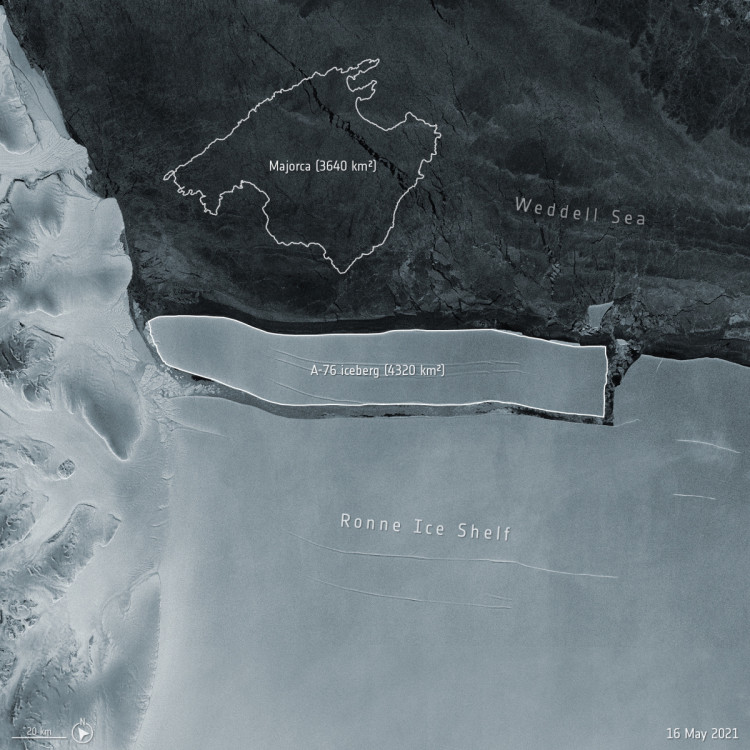A massive iceberg that broke off an Antarctic shelf earlier this month has been identified by the European Space Agency as the world's largest.
According to scientists, it could float in the ocean for several years before breaking up and melting away.
The iceberg, dubbed A-76, is more than 40 times the size of Paris, or about 73 times the size of Manhattan, making it the largest currently afloat.
It was discovered by British Antarctic Survey scientists and confirmed by the U.S. National Ice Center using photos from the ESA's Sentinel 1A satellite.
According to Mark Drinkwater, a senior scientist at ESA, while icebergs calve from Antarctic ice shelves on a regular basis, the area where A-76 broke off has seen relatively little change in recent decades.
"Obviously, it's become a poster child, and there'll be a lot of attention on it," Drinkwater said of the 4,320-square-kilometer (1,668-square-mile) iceberg.
A-76 would eventually break free from the Weddell Sea and drift into the South Atlantic, but the journey could take years.
The event moves iceberg A-23A, which is 1,305 square miles in size and also floats in the Weddell Sea, into second place among the world's largest icebergs.
Iceberg A68a, which was at one point the world's largest, was set on a collision course with a remote South Atlantic island, threatening the habitat of thousands of penguins and other wildlife, but it broke up into smaller pieces before reaching the island.
Ice shelves calve on a regular basis as part of a natural cycle. Ted Scambos, a research glaciologist at the University of Colorado at Boulder, told Reuters that this calving does not appear to be linked to climate change.
Scambos said that since the ice shelf was already floating in the sea before breaking off, the incident had little effect on ocean levels, while glaciers and ice sheets on land do increase sea levels as they break off into the ocean.
However, scientists suggest that the rapid disintegration of many large icebergs in recent years could be due to global warming, as these events are becoming more common.
Researchers have become concerned in recent years about many areas in Antarctica that are showing signs of instability as a result of a warming climate and changing ocean and atmospheric currents.






